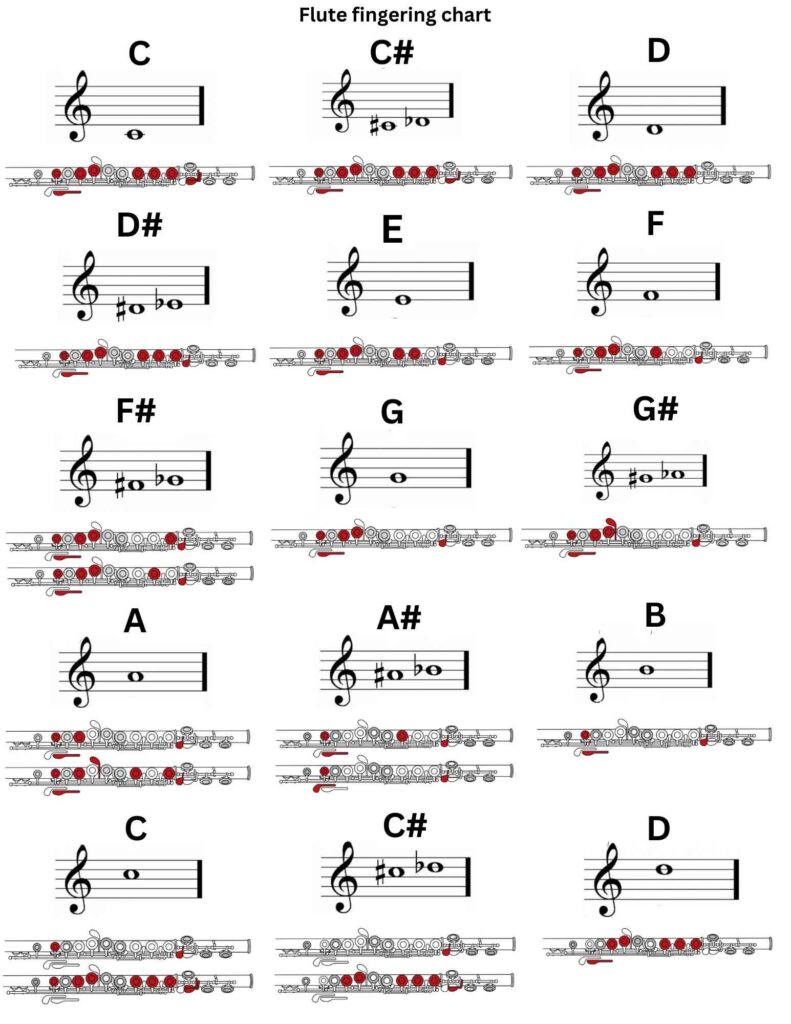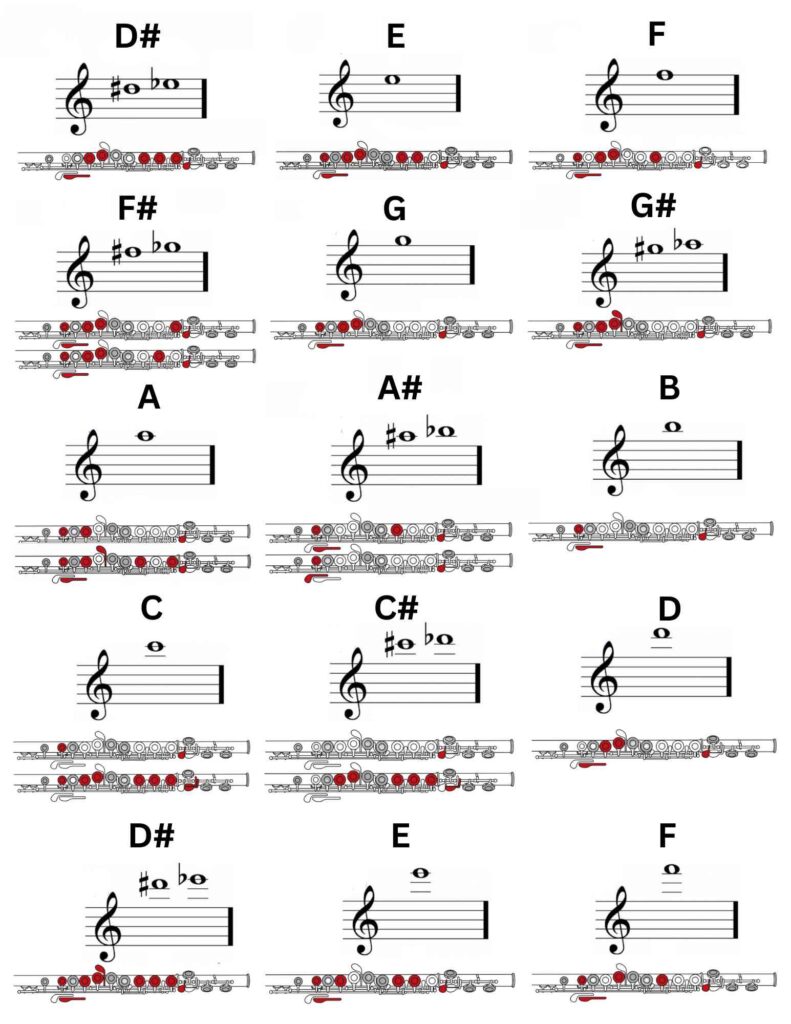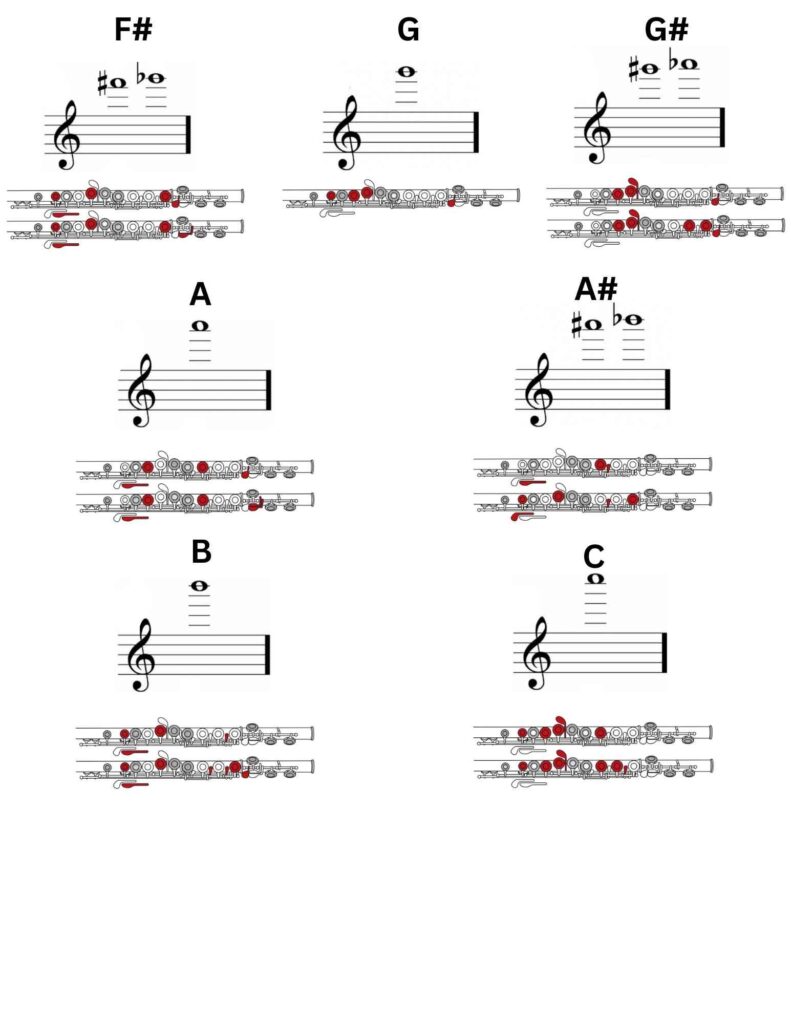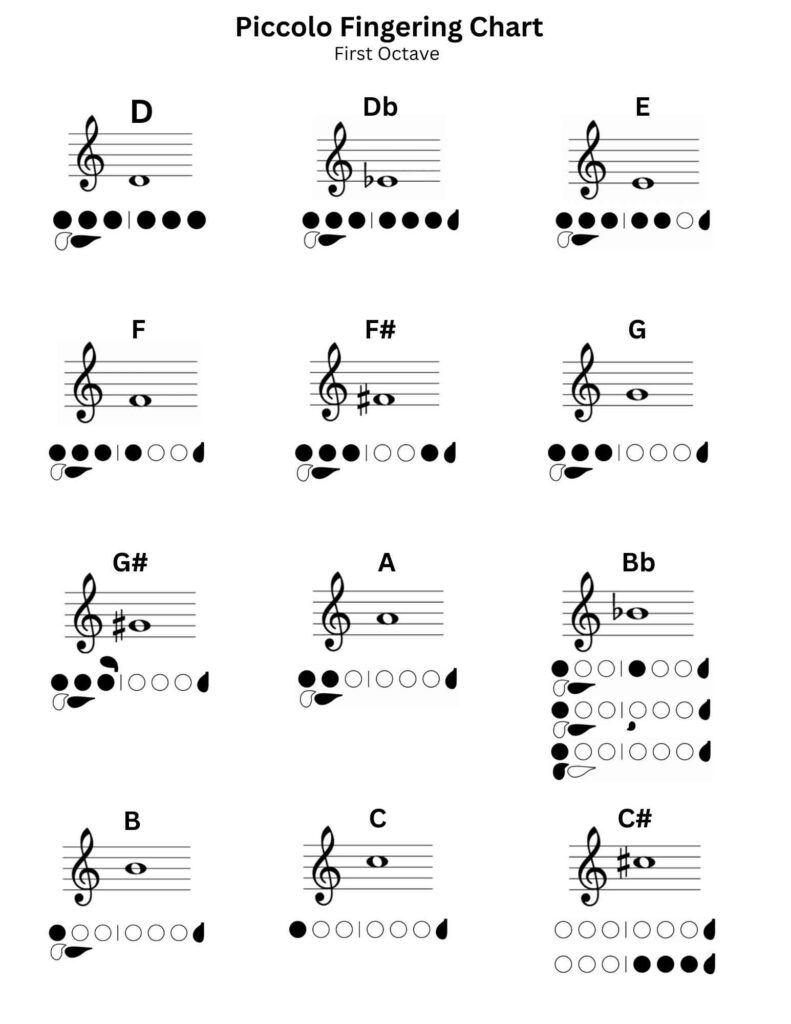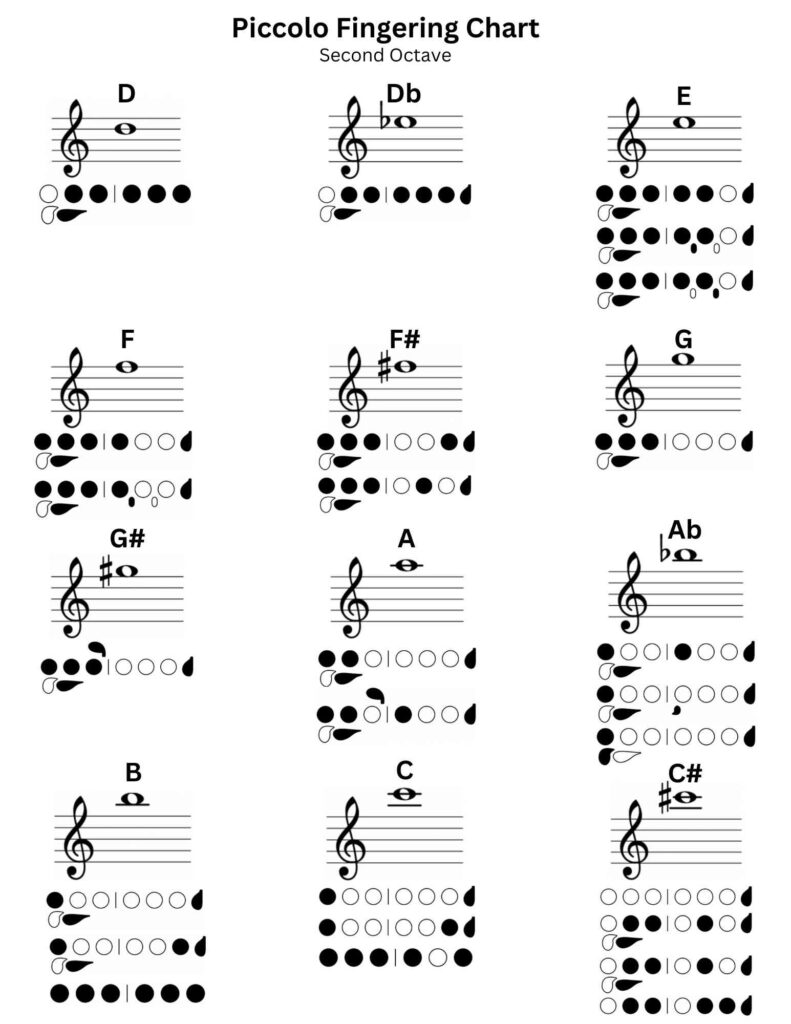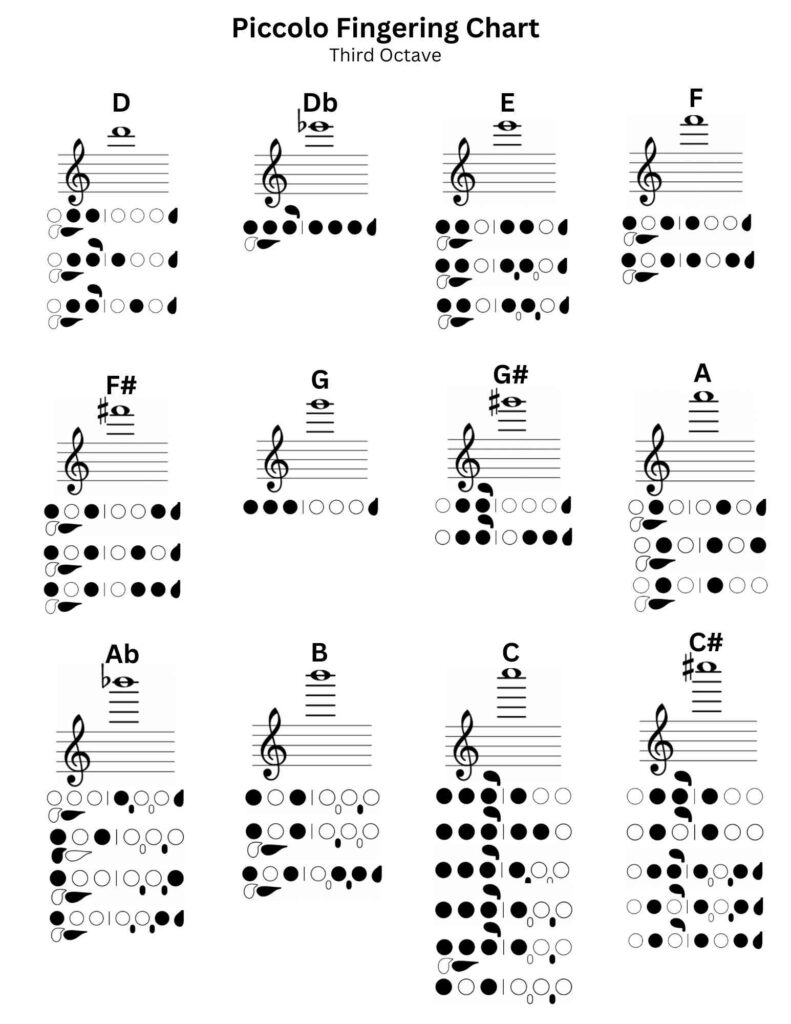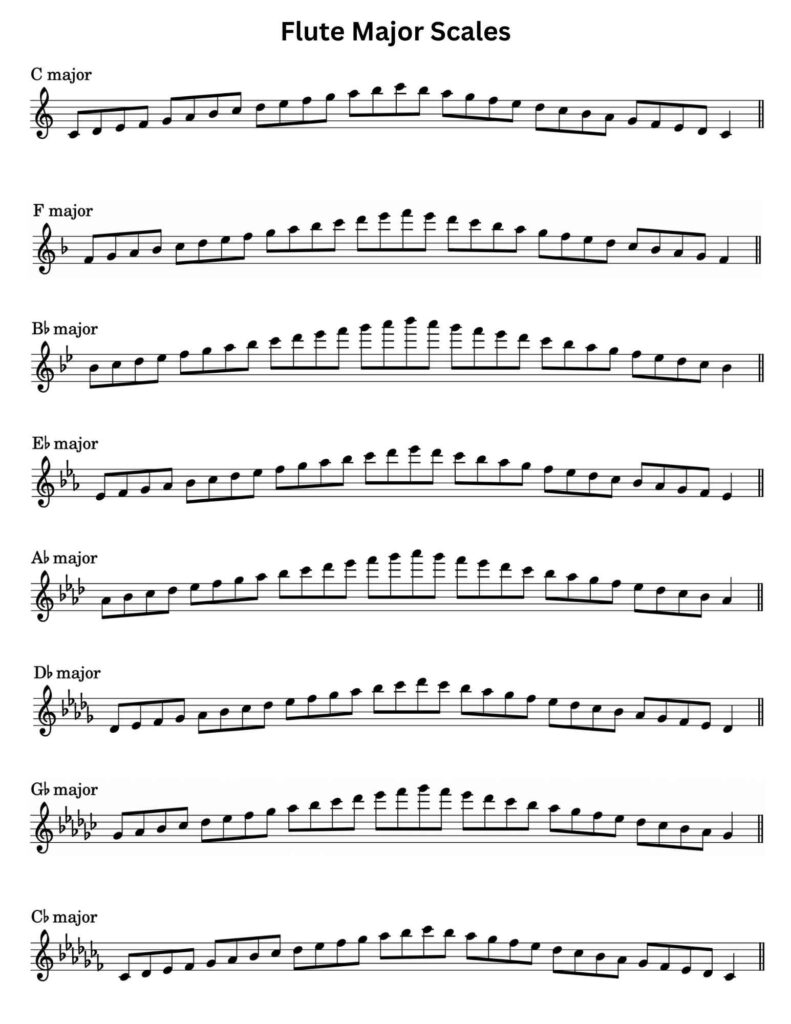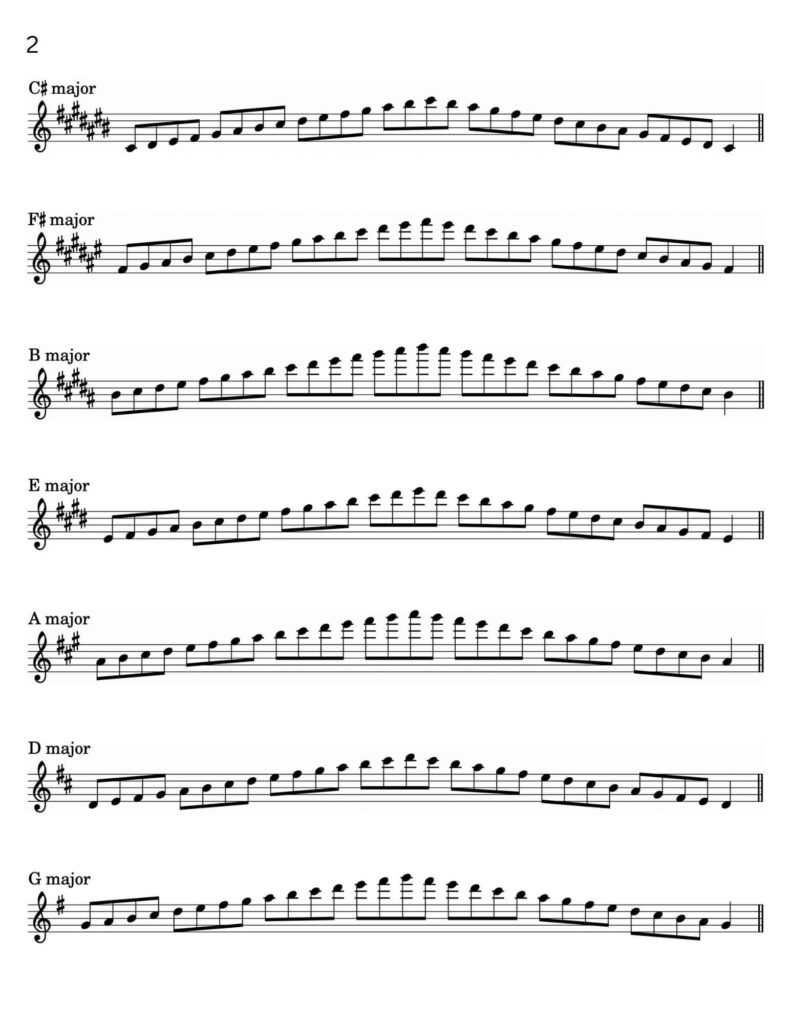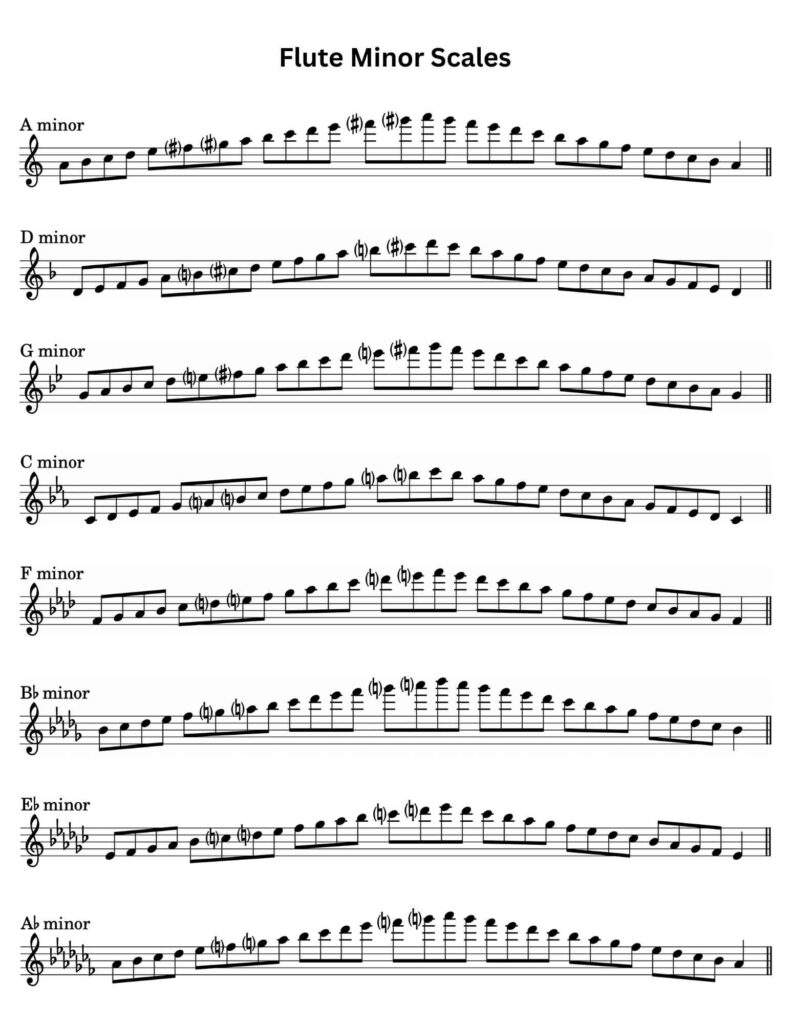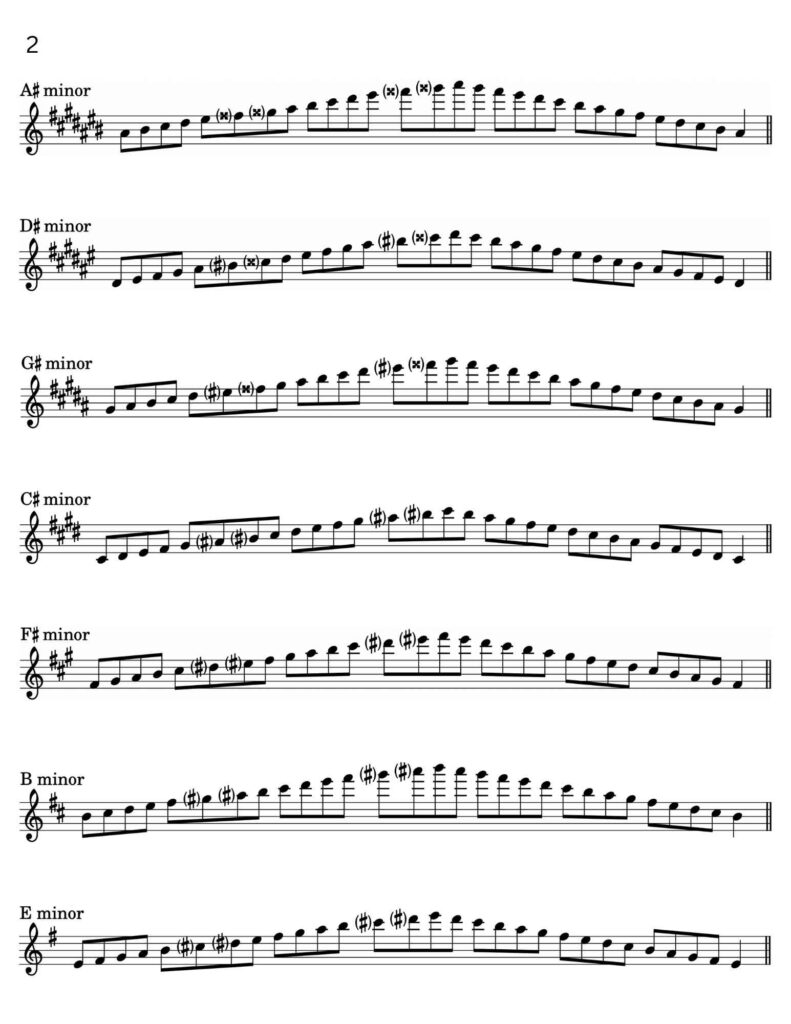Flute Fingering Chart PDF: Best Beginner’s Guide 2023
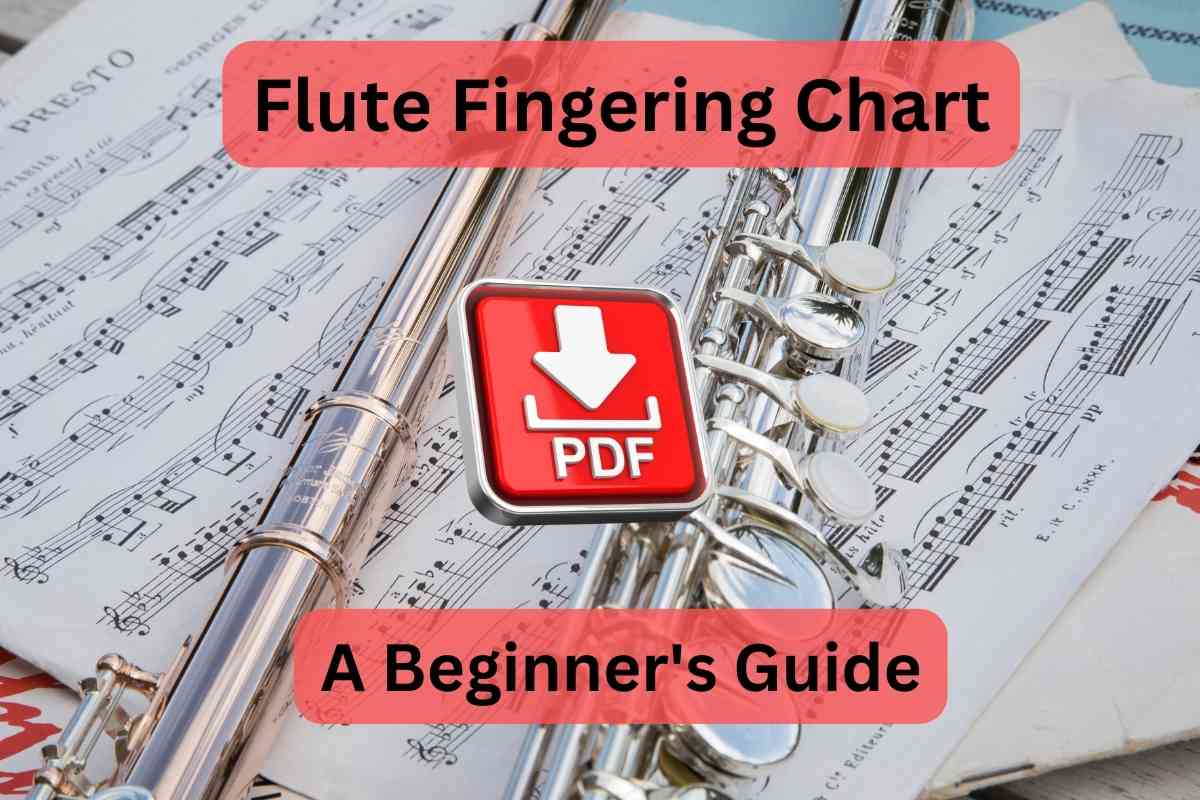
Flutists – both beginning and experienced alike – find the flute fingering chart PDF important as a visual guide to how they play notes on their instrument. We’ve included this beginner’s guide that covers what flute fingering charts are and their value in helping improve playing skills; there’re a free printable PDF chart, major scales and minor scales so that practice begins right away – hopefully helping you with your path towards becoming an accomplished flutist! With the help of flute fingering charts – you’re on your way!
Flute Fingering Charts
Flute fingering charts are indispensable resources for any flutist. They make learning the correct fingering of various notes easy by visually depicting where fingers should go on each note – providing students an accessible method to familiarize themselves with various fingerings while practicing to use them correctly in different musical situations.
Download the C flute fingering chart in PDF
A fingering chart allows musicians to easily understand which notes should be played at which octaves and how best to transition between them smoothly. Some notes even feature alternate fingering options to allow more versatility when performing different passages.
Musicians develop fast and precise finger movements while controlling dynamics when playing scales regularly, using alternate fingerings for effective muscle memory development and greater musical versatility.
How to Use Flute Fingering Chart PDF
First, identify the note you would like to play using this fingering chart that labels all notes on a staff, showing their name as well as what it looks like on it.
Once you know which note name it is, consult the fingering chart and identify its corresponding keys. This chart illustrates key positions relative to one another.
Position your fingers over an instrument according to a fingering chart — ready to play your note! Make sure your fingers are snug but not tight, applying enough pressure on the keys so as to produce an audible and clear tone from them.
Practice playing the notes and alternate fingerings found on your flute to gain proficiency at playing it. Explore various fingering techniques for each note – there is an array of alternate fingerings available — each has its own distinctive use depending on the song and/or exercise context.
Piccolo Fingering Chart
Due to being members of the concert flute family, many fingering techniques used when learning flute can also apply when beginning piccolo lessons; however, its lowest notes being higher.
While many flute fingerings may work on a piccolo, more alternate fingerings than is typical on a flute are needed when using alternate fingerings on it.
Download the Piccolo Fingering Chart in PDF
Playing piccolo and flute, beginners should focus on perfecting standard fingerings; experienced musicians may already feel at home with them.
The first octave may not be used often; it’s the second one more frequently. You can use the same fingerings across many of these octaves; to adjust pitch — simply adjust the air stream.
The third octave of a piccolo produces notes higher than what is typically produced by a flute. It provides more alternate fingerings than its first and second octaves.
Flute Scales
Scales provide the basis of music theory. It helps develop basic fingerings technique and strength. Practice scales for the ability to switch seamlessly between notes while maintaining precise intonation.
Scales can generally be divided into two broad categories, major and minor. Major scales are commonly heard in classical, pop, jazz and world music. Minor ones often lend a darker or somber sound. Both major and minor scales can be played on the flute, as well as various other scales like chromatic.
Flutists at all skill levels will find scale practice rewarding and enjoyable, allowing them to increase their understanding of music theory and the fundamentals of playing their flute. With regular practice comes greater knowledge about how it should sound and the technical requirements involved with fluting itself.
Scales should also serve as an invaluable guide when learning new pieces, helping familiarise you with all of the notes, alternate fingerings and articulations needed to play each one accurately and expressively.
Major Scales
Major scales form the core of Western music and are indispensable when playing a flute. Learn scales to significantly enhance your control, tone, and intonation while playing the flute. A major scale consists of seven distinctive tones or pitches which repeat themselves twice their frequency in succession to form its scale structure.
C Major is composed of the notes C D E F G A B C with no sharps or flats present — thus presenting an undistracted tonality.
Download Flute Major Scales in PDF
Start slowly when beginning to play scales (one octave), ensuring each note is in tune and clear. As your confidence builds, increase speed gradually while maintaining control and keeping breathing consistent. Regular flute scales practice helps build muscle memory so transitions between notes will occur more smoothly.
Consistent practice is key to mastering two octave scales; even spending just 10-20 minutes daily could result in noticeable improvement over time. With practice comes mastery – even small steps toward that goal add up over time!
Minor Scales
Minor scales differ from major ones by having different starting notes, thus producing different intervals between notes. Here is the sequence for minor scales: step, half step, step.
Example of A minor scale beginning on A note and moving through B, C, D, E, F and G to finally end on its starting note A note.
Download the Flute Minor Scales PDF
Experience different tempo styles when performing two octave scales; for instance, try playing them using either traditional waltz rhythm or by including eighth note triplets for extra “swing.” Doing this will surely bring out new and different challenges while further honing your flute playing skills! These technical exercises can only lead to further growth!
Here you can find Free Easy Flute Sheet Music: Disney, Christmas, Beginner Solo.
How to Hold a Flute
Ensure your posture is relaxed when holding a flute; ensure your shoulders are relaxed, with feet planted firmly on the floor and no strain placed upon arms and neck during playing. Avoid slouching — this could strain them further while playing!
Keep your spine straight and aligned while playing; your head should also remain level. Avoid tilting back your head while playing; this could result in neck strain or impair breathing. Aligning your head above your shoulders to avoid forward lean or lean back posture.
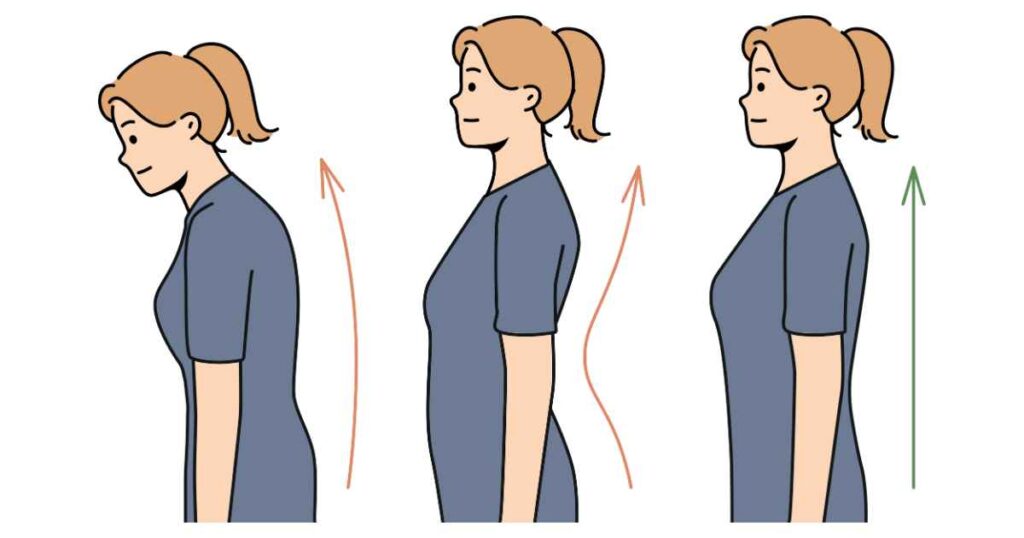
Left Hand Position
Start off by positioning your left thumb on the bottom and wrapping your fingers around its outer edge – this should ensure your thumb remains rested and undisturbed. Your hand should remain open and relaxed with slightly curving fingers. Place the flute between the thumb and index finger on the palm this will support the flute’s top joint.
Use your left thumb on the first key at the bottom of the flute body and your fingers to control keys nearer to its embouchure hole near its head joint. Your index, middle, and ring fingers should occupy the 2nd, 4th, and 5th keys respectively. Your pinky should lightly touch a side key – your hand will form a C-shape.
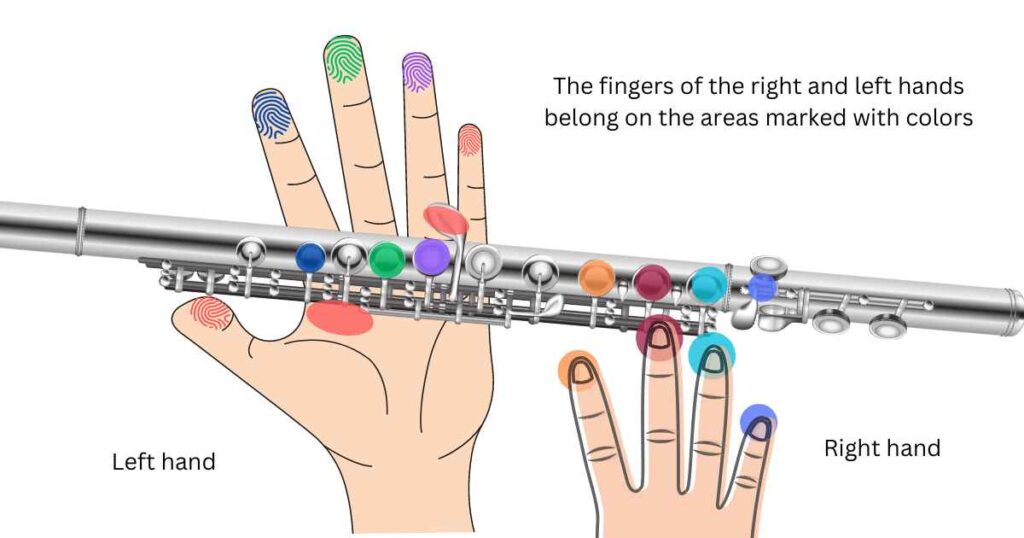
Right Hand Position
Position your right hand on the foot joint of the flute with your thumb resting comfortably at the bottom as there is no home key for it. The right hand forms a comfortable and open C shape, like the left.
Place the right index finger, middle finger and ring finger of your right hand on each of the three bottom keys near the foot joint. Make sure your pinky is placed as far curved as possible on one of the first small keys just under it – keep this finger curved as much as possible when placing it on this key!
Hold a Flute Horizontally
Maintain proper posture by holding the flute at an approximate 90º angle relative to your body. Avoid keeping elbows close together but instead out, and focus on a 45º elbow angle as part of proper flute playing posture – never stick out your head forward when playing the flute!
Classical flutists must display greater tonal purity; it’s key that their flute remains level while playing. Only use your fingertips on its keys while keeping all other fingers away from its keys for best results; ensure the instrument stays parallel with the floor in terms of horizontal playing position.
For more info, follow this great Yamaha guide for how to play the flute!
Alto Flute and Bass Flute Fingering Charts
Bass and Alto Flute Fingering Charts are an extension of the more commonly seen concert flute fingering charts but may differ due to the larger sizes. Even so, their fingering patterns follow similar paths as is commonly found with concert flutes.
Bass, alto and concert flute share standard fingering patterns starting with low C all the way through high A.
Bass bass flute differs slightly from a concert flute in that you must perform in a lower octave, as its key of C makes it naturally suitable for orchestral settings without transposing. Bass flute pitch integrates into ensembles adding depth and richness to musical experiences.
The Alto Flute is tuned in the key of G, setting itself apart from the standard flute, piccolo and bass flute — all use C tunings. To play A on an alto flute, you need to transpose and use D fingerings so both alto and concert instruments reach similar pitches while using one fingering chart.
Conclusion
Beginner flutists need the necessary tools and resources, including flute fingering charts PDF. Fingering charts offer visual guidance when learning fingering patterns quickly and accurately – plus with practice – you will soon be playing all your favorite tunes with no issue at all!
Hope our beginner’s guide to flute fingering chart PDFs was useful in getting you started on your flute journey! Practice makes perfect; keep practicing and soon enough you will become an accomplished flutist! Good luck with your musical adventure & enjoy playing your instrument!
Are you curious to expand on your flute theory knowledge? Take a peek into our Full Flute Anatomy Guide for further understanding its parts!

